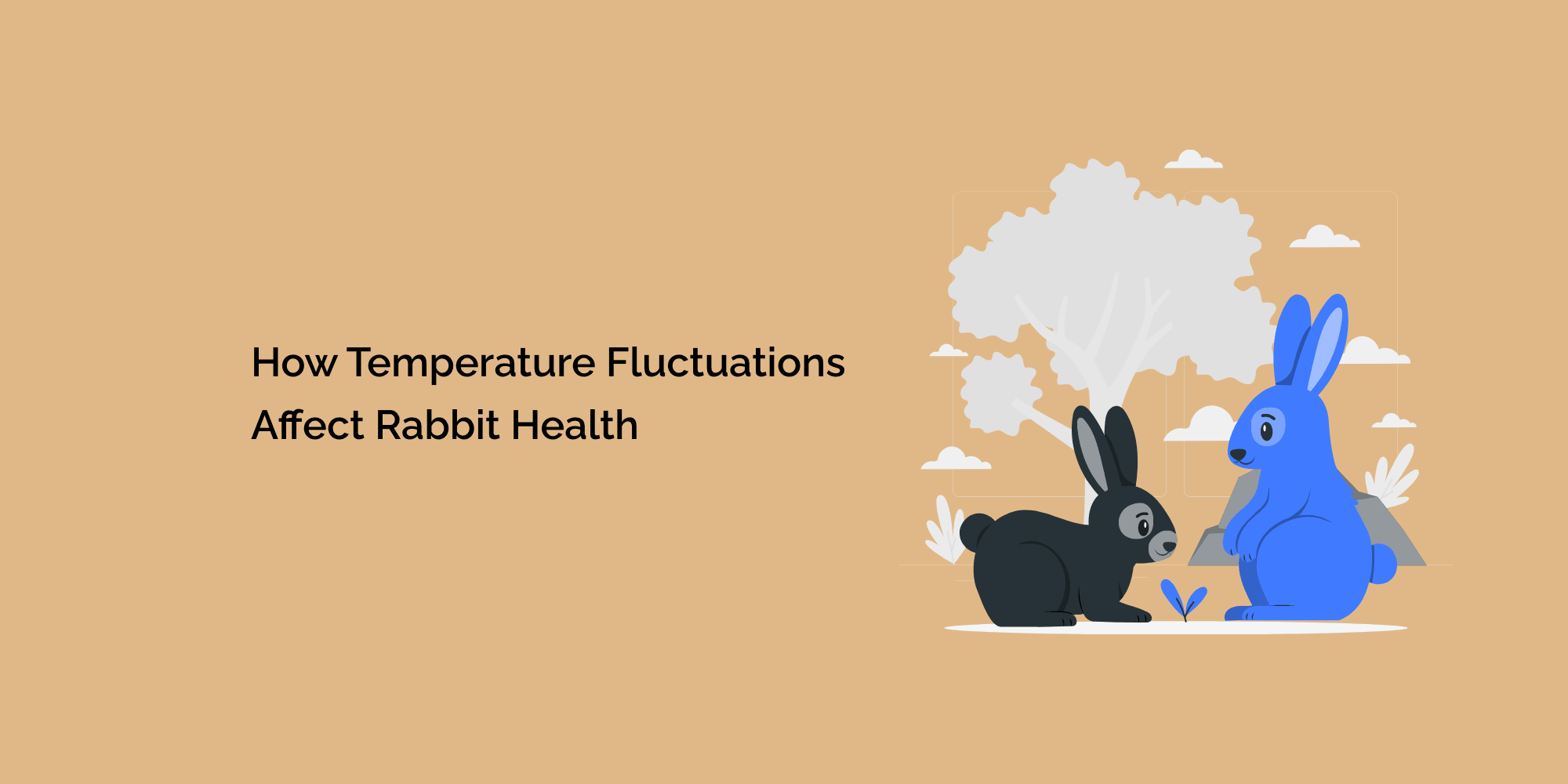Rabbits are adorable and gentle creatures that bring joy to many homes and farms. As responsible rabbit owners, it is crucial to understand how temperature fluctuations can significantly impact their health and well-being. Rabbits are sensitive animals with specific temperature requirements, and exposure to extreme cold or heat can lead to various health issues.
In this comprehensive blog, we will explore the effects of temperature fluctuations on rabbit health and provide valuable tips to ensure your furry companions stay comfortable and healthy in all weather conditions.
Understanding Rabbits' Temperature Sensitivity
The Influence of Wild Ancestors
Domestic rabbits are descendants of wild European rabbits, which lived in burrows providing natural insulation against temperature fluctuations. Understanding their natural habitat helps us comprehend how to create a suitable environment for domestic rabbits.
The Role of Fur and Coat Changes
Rabbits boast a thick and dense coat of fur, which serves as their primary defense against temperature changes. Their fur helps retain body heat in cold weather, while during hot weather, it provides insulation to prevent overheating. Additionally, rabbits undergo coat changes during seasonal transitions, adapting their fur thickness to the prevailing temperatures.
The Ideal Temperature Range for Rabbits
Optimal Temperature Range
The ideal temperature range for rabbits falls between 50°F to 70°F (10°C to 21°C). Within this range, rabbits can maintain their core body temperature without expending excessive energy. Understanding this range is vital for keeping rabbits comfortable and healthy.
Effects of Cold Temperatures
When the temperature drops below the lower limit of their ideal range, rabbits can experience various health issues, including hypothermia. We'll explore the symptoms and signs of hypothermia and how to prevent it.
Effects of Hot Temperatures
High temperatures pose a different set of challenges for rabbits. Heat stress and heatstroke become significant concerns, and we'll delve into the signs of heat stress and how to cool down rabbits effectively during hot weather.
Impact on Rabbit Metabolism and Energy Expenditure
Increased Energy Expenditure in Cold Weather
When exposed to cold temperatures, rabbits burn more energy to maintain their body heat. This increased energy expenditure may lead to reduced activity levels and a need for higher-calorie diets during colder months.
Heat Stress and Metabolic Challenges in Hot Weather
Hot temperatures can elevate a rabbit's metabolic rate to dangerous levels, leading to dehydration and other health issues. We'll discuss the impact of heat stress on rabbits and ways to mitigate it.
Managing Temperature Fluctuations in Rabbit Habitats
Providing Shelter and Insulation
Insulating rabbit hutches and providing adequate shelter are essential in protecting rabbits from extreme temperatures. We'll explore the best materials for insulation and how to design a comfortable living space for rabbits.
Using Cooling Techniques
During hot weather, rabbits need cool spots to escape the heat. We'll discuss techniques such as providing shade, using fans, and cooling mats to help rabbits stay comfortable in warm temperatures.
Transitioning Rabbits Between Temperature Extremes
Gradual Acclimation
Abrupt temperature changes can be detrimental to rabbits' health. We'll provide guidelines on how to gradually acclimate rabbits when transitioning from indoor to outdoor environments or vice versa.
Monitoring Behavioral Changes
Rabbits may exhibit specific behaviors in response to temperature fluctuations. Being attentive to their actions can help identify potential health issues and discomfort caused by temperature changes.
Conclusion
Temperature fluctuations can significantly impact rabbit health, but as responsible owners, we have the power to create an environment that keeps them comfortable and thriving in all weather conditions.
Understanding rabbits' temperature sensitivity, providing proper shelter and insulation, and monitoring their well-being are essential steps in ensuring the health and happiness of our beloved furry friends. By implementing these strategies, we can give our rabbits the best chance of living a long, healthy, and fulfilling life.








